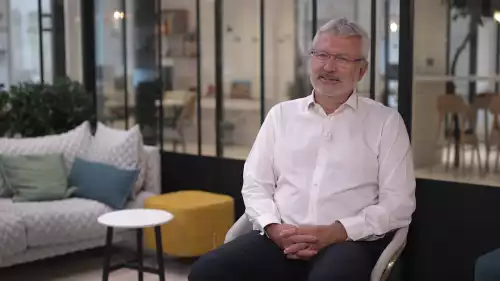The term agile methodologies typically brings to mind software startups and app developers—not aerospace manufacturers. But mainstream companies are beginning to deploy agile in targeted areas, proving that it can deliver results in previously unimagined ways.
Latécoère, a French aircraft company, deployed agile to dramatically reduce the amount of time it took to design and build a new aircraft door. The company’s goal was to cut development time from four years to two years. But with agile, it did even better than that—designing and building a door in just 18 months.
Serge Bérenger, Latécoère's senior vice president of innovation and research & technology, recently spoke with BCG about the company's agile journey. Excerpts from the interview follow.
About Serge Bérenger
About Serge Bérenger
At a Glance
Year born: 1965
Education
1999, Ingénieur ESE, École supérieure d'électricité
1995, MS in electronics, electrotechnics, and automatics, Université Paris Sud (Paris XI)
Career Highlights
2016–present, Latécoère, senior vice president, innovation and research & technology
2014–2015, Labinal Power Systems, vice president, innovation and research & technology
2005–2013, Hispano-Suiza, vice president, strategy and research & technology
2001–2005, Thales Aerospace, various positions
So, Latécoère is an aircraft parts manufacturer operating for framers and airlines, and we deliver parts for aero structures and interconnection systems.
We had decided to go for the agile methodology because the market requires [companies] to inject breakthroughs in a shorter time than what we could reach using the conventional methodology. As an example, it takes four years, approximately, to fully develop a door [for an aircraft] starting from scratch; and if we were to follow that schedule, we wouldn't meet the market milestones for the next aircraft development.
So we said, "What can we do?" And we said, "Let's move for the agile methodology." And we said, "We want to divide the schedule by two—by a ratio of two." And what we achieved actually was slightly better.
It started with a trust we had with you [BCG] in the ability to embark us on that journey. We wouldn't have tried this otherwise.
It took 18 months starting from the white paper—from nowhere—up to a minimum viable product at level three, which was exhibited at the Paris Air Show this year. And that was a really big change in our expectation but also in our customer’s expectation.
We had ideas and we had generated solutions that we wouldn't have found if we were to develop the program in the standard way.
So the team is very proud to be the first team in aerospace to inject agile methodology or to apply agile methodology on a structures product. They are really proud of that, because actually it's their success.
The customer was not initially convinced that this would deliver a breakthrough and significant results. Actually, they were a bit skeptical. But this progressively changed into a conviction that, yes, it will work. And then, by the proof of the result—the actual outcome—they were really convinced that this is a great approach.
The main leadership skill that we have to show and that we have to leverage when we go through this agile journey is twofold. The first one is trust, and the second one is empowerment. You have to refrain from being intrusive, of micromanaging the team.
After running the project and after this journey through the agile methodology, we wouldn't change anything, because the customer is happy, the executive committee is happy, the team is happy, all the results have been met ahead of schedule with a result in excess or beyond expectation regarding the technical outcome and the performance of the system—and the cost was reduced as well.
If I were to provide advice to another aerospace company to implement the agile methodology, I just [would say], “Do it. Don't be afraid, but be sure that you're prepared to support this key change in the organization and to make it successful.”






